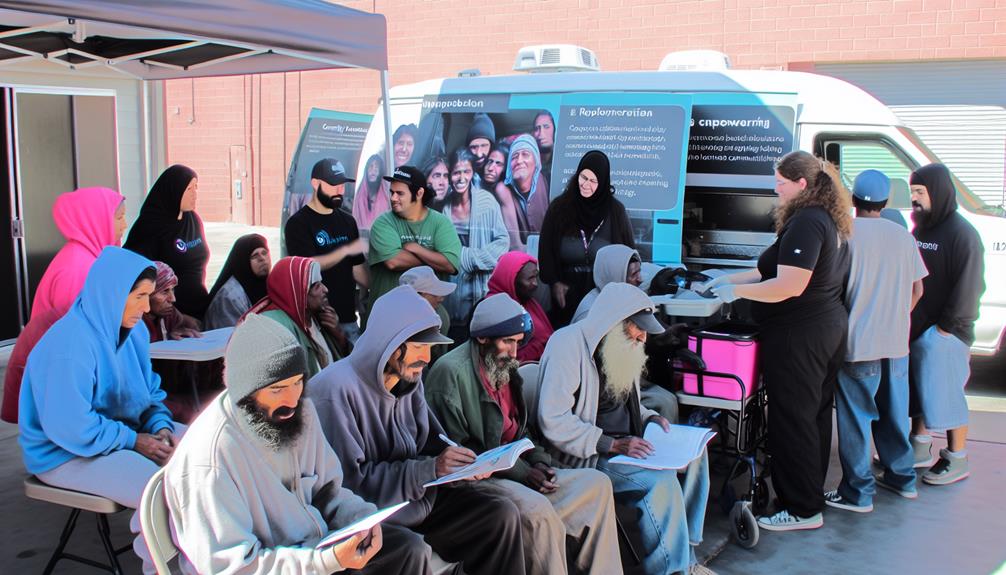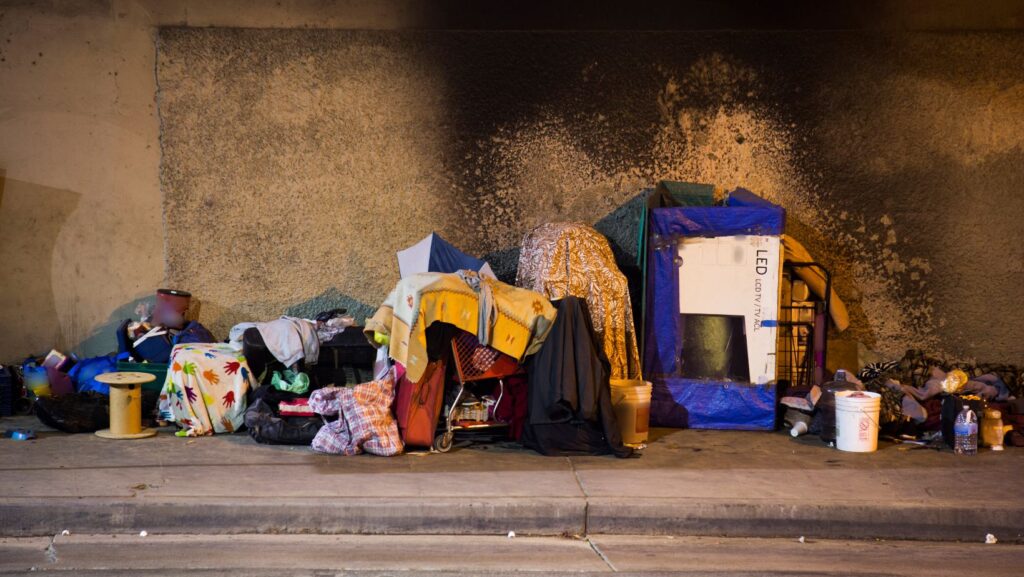Picture this: you're walking down a dimly lit alleyway, filled with the sounds of despair and the remnants of broken dreams. Among the shadows, you come across a figure huddled in a corner, their eyes glazed and empty.
This individual, like many others, is homeless and struggling with addiction. In this world where hope seems to fade away, there are three strategies that have proven to be effective in preventing overdose among homeless individuals.
These strategies hold the key to saving lives and providing a glimmer of hope in the darkest of times. So, what are these strategies and how can they make a difference? Let's explore together.
Outreach and Education Programs

Outreach and education programs play a crucial role in preventing overdoses among homeless individuals by providing vital information and resources to empower them with the knowledge and skills necessary to protect their own health and well-being. These programs often utilize interactive workshops to engage homeless individuals and educate them about harm reduction techniques.
Interactive workshops are an effective way to deliver overdose prevention education to homeless individuals. These workshops allow participants to actively engage in the learning process, ask questions, and share their own experiences. By creating a safe and supportive environment, outreach programs can effectively convey important information about overdose prevention.
One key aspect of these workshops is the focus on harm reduction techniques. Homeless individuals often face unique challenges and barriers when it comes to accessing healthcare and addiction treatment. By teaching harm reduction techniques, such as safe injection practices and overdose response strategies, outreach programs can equip homeless individuals with practical skills to reduce the risk of overdose.
Additionally, these programs provide access to resources such as naloxone, a medication that can reverse the effects of an opioid overdose. By distributing naloxone kits and training individuals on how to administer it, outreach programs ensure that homeless individuals have the tools necessary to respond in case of an overdose emergency.
Access to Naloxone
To ensure the safety and well-being of homeless individuals, it's crucial to address their access to naloxone, a medication that can reverse the effects of an opioid overdose. Naloxone is an opioid receptor antagonist that rapidly binds to the same receptors as opioids, blocking their effects and restoring normal breathing. It's administered through intranasal or intramuscular routes, making it easy to use even in emergency situations.
Providing homeless individuals with access to naloxone can be a vital harm reduction strategy. Homeless individuals often face higher risks of opioid overdose due to factors such as unstable living conditions, substance use disorders, and limited access to healthcare services. By ensuring they have access to naloxone, we can empower them to take immediate action in the event of an overdose and potentially save lives.
Efforts should be made to distribute naloxone kits to homeless individuals and provide training on its proper use. Community organizations, outreach programs, and healthcare providers can play a crucial role in increasing access to naloxone among this vulnerable population. Additionally, collaborations with local pharmacies and harm reduction programs can help facilitate access and ensure a steady supply of naloxone.
Collaboration With Community Organizations
Collaborating with community organizations is essential in enhancing access to naloxone among homeless individuals, as they can provide valuable resources and support in distributing this life-saving medication. By working together, we can ensure that naloxone is readily available to those who need it most.
Here are four reasons why collaboration with community organizations is crucial:
- Resource coordination: Community organizations have the knowledge and expertise to effectively coordinate resources for naloxone distribution. They can identify the areas with the highest overdose rates among homeless individuals and strategically allocate naloxone kits to those locations.
- Supportive housing: Community organizations that provide supportive housing for the homeless can play a vital role in overdose prevention. By incorporating naloxone training and distribution into their programs, they can equip residents with the necessary tools to respond to an overdose and potentially save lives.
- Outreach efforts: Community organizations are often deeply rooted in the communities they serve, making them well-positioned to conduct outreach and education campaigns about the importance of naloxone. Through their established networks, they can reach homeless individuals who may not have access to traditional healthcare settings.
- Advocacy: Community organizations can advocate for policy changes and increased funding to support overdose prevention programs. By working together, we can create a stronger voice for homeless individuals and push for initiatives that prioritize their health and well-being.
Collaborating with community organizations is a crucial step in enhancing access to naloxone among homeless individuals. By leveraging their resources, knowledge, and advocacy efforts, we can make a significant impact in preventing overdose deaths in this vulnerable population.








